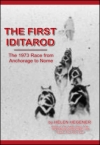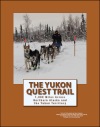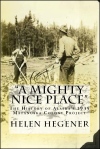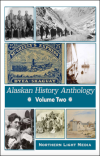 “The valley looks great. It looks fine, fine. You got a mighty nice place here.” ~American humorist and commentator Will Rogers, Palmer, Alaska, August, 1935
“The valley looks great. It looks fine, fine. You got a mighty nice place here.” ~American humorist and commentator Will Rogers, Palmer, Alaska, August, 1935
In 1935 the U.S. Government transported 200 families from the Great Depression-stricken midwest to a valley of unparalleled beauty in Alaska, where they were given the chance to begin new lives as part of a federally-funded social experiment, the Matanuska Colony Project. It was part of President Franklin Delano Roosevelt’s New Deal for America, an unprecedented series of economic programs designed to provide aid to people reeling from the Great Depression. Nearly one hundred new communities were designed and developed by Roosevelt’s planners, but the largest, most expensive, and most audacious of them all was to build a government-sponsored farming community in Alaska’s Matanuska Valley.

“A Mighty Nice Place,” The History of the 1935 Matanuska Colony Project, by Helen Hegener, explains how a few visionary men convinced the planners in Washington, D.C. to extend their community-building efforts north to Alaska, and tells the complex story of this important chapter in Alaska’s history. On February 4, 1935, Executive Order Number 5967, signed by President Roosevelt, withdrew 8,000 acres of agriculturally promising land in the eastern part of the Matanuska Valley from homestead entry. When word of the Federal Government’s new program reached the press there were very mixed reactions and many misunderstandings, but the Alaskan colonization program quickly gripped the public’s attention with images of brave pioneers setting forth to recreate the Manifest Destiny of their forefathers in opening new lands. This mysterious territory of Alaska was, like the frontier west before it, the stuff of legends, with towering mountains, endless forests, unknown coasts and wild uncharted rivers.
 The April 13, 1935 issue of the Ironwood Daily News, Ironwood, Michigan, noted: “Two hundred families–including 1,000 persons–have been selected from farms in northern Minnesota, Michigan and Wisconsin to form the colony. Each family will be lent $3,000 and will be furnished a 40-acre homestead. Thirty years will be allowed for repayment of the money. The 480 relief workers who help launch the project will return to the states in the fall, leaving the farmers to carry on.”
The April 13, 1935 issue of the Ironwood Daily News, Ironwood, Michigan, noted: “Two hundred families–including 1,000 persons–have been selected from farms in northern Minnesota, Michigan and Wisconsin to form the colony. Each family will be lent $3,000 and will be furnished a 40-acre homestead. Thirty years will be allowed for repayment of the money. The 480 relief workers who help launch the project will return to the states in the fall, leaving the farmers to carry on.”
Today there is a broad grassy park in Palmer which features historic signs telling of the town’s Colony heritage. Nearby is the ship’s bell from the U.S. Army Transport Ship St. Mihiel, which transported the first group of colonists from Minnesota to Alaska, and a set of brass plaques with the names of the Colonist families. The Colony House museum in Palmer reflects an average Colonist family’s home, restored to its 1936 -1945 appearance. Seventeen structures have been identified within the National Register of Historic Sites’ Matanuska Colony Historic District, including several Colony farms, a number of original Colony homes, the Matanuska Colony Community Center, the Palmer Train Depot, and others. The Alaska State Fair utilizes several original Colony buildings for administration and exhibit purposes, including a beautifully preserved Colony barn, one of over 60 remaining Colony barns in the Valley.
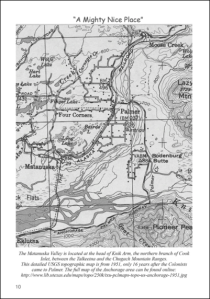 The remarkable photos of Willis T. Geisman, A.R.R.C. official photographer for the Matanuska Colony Project, documented every aspect of the venture, from the kitchen help aboard the North Star to the colonists’ children playing in the tent city, from officials posing stiffly for portraits to farmers working together to build homes before winter. His photographs portray proud farm wives showing their neat tent kitchens, and a small girl sitting in an Alaskan berry patch grinning at the cameraman. Geisman’s compelling images tell the true stories, moments in time captured and preserved, of children laughing, women working, men building futures for their families, brought together here with the detailed history of the Matanuska Colony Project.
The remarkable photos of Willis T. Geisman, A.R.R.C. official photographer for the Matanuska Colony Project, documented every aspect of the venture, from the kitchen help aboard the North Star to the colonists’ children playing in the tent city, from officials posing stiffly for portraits to farmers working together to build homes before winter. His photographs portray proud farm wives showing their neat tent kitchens, and a small girl sitting in an Alaskan berry patch grinning at the cameraman. Geisman’s compelling images tell the true stories, moments in time captured and preserved, of children laughing, women working, men building futures for their families, brought together here with the detailed history of the Matanuska Colony Project.
The Kindle edition of this 2016 book is formatted as a print replica Kindle book, which maintains the rich formatting and layout of the print edition, while offering many of the advantages of standard Kindle books. Features include a pop-out and linked table of contents, page numbers matching the print edition, the ability to zoom in or pan out on a page, and search, copy, and paste features. Visit the Kindle store on Amazon to preview a sample of the book or to order your own copy today for only $5.99 (Kindle Matchbook $2.99)!

CLICK THE LINK ABOVE TO VISIT THE AMAZON KINDLE STORE













